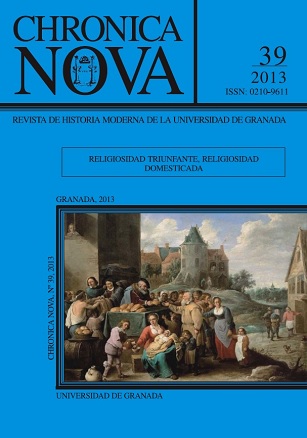Sacred sculptures Rescued, christian captives: a language between symbolism and reality
DOI:
https://doi.org/10.30827/cn.v0i39.1343Keywords:
Sacred sculpture, Rescue of captives, Brotherhoods, SlaveriesAbstract
The rescue of captives (including sacred sculptures) and the rise of the brotherhoods called esclavitudes seem apparently different realities. But really both respond to the same religious mentality in the Spain of the Old Regime. First, the rescue of captives is considered a moral duty, serving both the body and the soul. It is celebrated with acts of political and religious triumph, reinforced by the baroque splendor. Moreover, the consecration of “slaves” to Jesus Christ and the Virgin Mary is a gesture of sublimed piety. It was very attractive to urban elites, especially in Madrid. Thus, the negativity of bondage/slavery becomes a sign of religious exaltation. Symbolic language plays an essential role in this process.
Downloads
Downloads
Published
How to Cite
Issue
Section
License
Nuestra revista se atiene a las recomendaciones para la implementación del Artículo 37 Difusión en Acceso Abierto de la Ley de la Ciencia, la Tecnología y la Innovación:
- Los/as autores/as cuyas contribuciones sean aceptadas para su publicación en esta revista conservarán el derecho no exclusivo de utilizar sus contribuciones con fines académicos, de investigación y educativos, incluyendo el auto-archivo o depósito de los artículos aceptados en repositorios institucionales o temáticos de acceso abierto de cualquier tipo en un plazo máximo de seis meses.
- Preferiblemente se permitirá el uso de la versión publicada de las contribuciones científicas, que estarán accesibles en abierto tan pronto como sea posible.
-
Que en caso de que el trabajo sea aprobado para su publicación, el/la autor/a autoriza de manera ilimitada en el tiempo a la entidad editora para que incluya dicho texto en Chronica Nova y pueda reproducirlo, editarlo, distribuirlo, exhibirlo y comunicarlo en el país y en el extranjero por medios impresos, electrónicos, CD, Internet o cualquier otro medio conocido o por conocer.






 ISSN-e: 2445-1908
ISSN-e: 2445-1908










